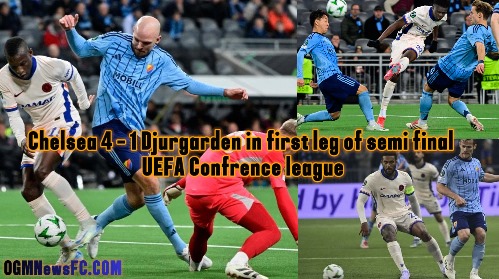Steven Gerrard arrival in Saudi Arabia was marked by optimism, ambition, and a lucrative contract. In July 2023, the former Liverpool captain embraced the Middle Eastern culture, donning a traditional white thawb with a matching Arab headdress as he was unveiled as Al Ettifaq’s new manager. The move symbolized a fresh chapter in his coaching career following a disappointing stint at Aston Villa.
Steven Gerrard’s recruitment was part of Saudi Arabia’s grand football revolution, with the Saudi Pro League (SPL) attracting big names like Cristiano Ronaldo, Neymar, and Karim Benzema. The prospect of shaping Al Ettifaq into a competitive force excited him, especially after he secured Jordan Henderson, his former Liverpool teammate, to join him in the Gulf state. With the promise of financial backing and a reported £15 million annual salary, Gerrard was eager to turn Al Ettifaq into serious contenders.
Struggles in Squad Building and Growing Frustrations
Despite the initial excitement, Steven Gerrard soon realized that Al Ettifaq could not compete financially with the SPL’s top four clubs—Al Hilal, Al Nassr, Al Ahli, and Al Ittihad—all backed by the Saudi Public Investment Fund (PIF). While elite teams secured international stars such as Moussa Diaby and Ivan Toney, Al Ettifaq settled for signings like Fulham’s backup goalkeeper Marek Rodak. Even high-profile acquisitions like Henderson, Demarai Gray, and Georginio Wijnaldum failed to bridge the competitive gap.
The lack of significant reinforcements left Steven Gerrard frustrated. He had envisioned a team capable of finishing in the top four, but financial constraints and poor squad depth hampered his plans. Injuries to key players, inconsistent performances, and internal challenges further derailed Al Ettifaq’s campaign. As the club struggled in mid-table, Gerrard’s enthusiasm for the project started to wane.
A Mutually Agreed Exit Amid Disappointing Results
Steven Gerrard departure from Al Ettifaq was not as abrupt or controversial as his exit from Aston Villa, where fan pressure and poor results led to his sacking. Instead, it was a more calculated decision, reached through extended discussions between the manager and club officials. Sources close to the club indicated that Gerrard had been contemplating leaving for months as his frustration with the team’s struggles deepened.
While Al Ettifaq’s president, Samer Al Misehal, praised Gerrard’s efforts in a diplomatic farewell statement, the reality was stark: the club was languishing in 12th place in an 18-team league, falling far short of expectations. Despite Gerrard’s composed exit statement expressing optimism for the club’s future, the project had ultimately failed to deliver on its grand promises.
Lessons from a Misguided Gamble
Steven Gerrard Saudi Arabian adventure serves as a cautionary tale about the risks of ambitious coaching moves in unfamiliar territories. His experience at Al Ettifaq mirrored his Aston Villa tenure, where early optimism gave way to disappointment due to squad limitations and underwhelming performances. The former England captain’s managerial career now faces another setback, raising questions about his next step in football management.
Saudi Arabia’s football revolution continues, but Gerrard’s story highlights the challenges that come with coaching outside Europe’s established leagues. Without the financial muscle to compete with PIF-backed giants, Al Ettifaq could not provide the platform he had hoped for. As Steven Gerrard moves on, his time in the SPL will likely be remembered as a frustrating detour rather than a defining chapter in his managerial journey.
Steven Gerrard Early Frustrations and Structural Challenges
From the outset, Steven Gerrard’s tenure at Al Ettifaq was marked by ambition but also by frustration. His desire to create an elite environment sometimes clashed with the realities of managing a club still finding its footing in the ever-evolving Saudi Pro League. He pushed for better facilities and higher standards, but obstacles emerged.
During an extended summer training camp in Croatia, Steven Gerrard was visibly frustrated with subpar conditions, including poor pitches and a lack of privacy at the team’s hotel. While Al Ettifaq’s home base boasted Premier League-quality facilities, including a state-of-the-art gym and an impressive 15,000-capacity stadium, these external disruptions took a toll. Despite these challenges, Steven Gerrard remained committed, working closely with his players on the training ground daily. However, his efforts to instill his philosophy did not always translate into success on the pitch.
Transfer Market Struggles and On-Field Setbacks
While Steven Gerrard initially secured a respectable sixth-place finish in his debut season, cracks began to appear in his project as the 2024-25 campaign unfolded. A major setback was the departure of key midfielder Jordan Henderson, who left for Ajax just months after arriving. Unable to find a suitable replacement, Steven Gerrard saw his midfield struggle, with Seko Fofana failing to live up to expectations.
Recruitment issues persisted, with Al Ettifaq unable to secure their desired targets due to financial constraints. The signing of Joao Costa from Roma, their only standout overseas acquisition, came at the last minute, and the 19-year-old struggled to make an immediate impact. Even more telling was the departure of long-time Al Ettifaq midfielder Ali Abdullah Hazazi to rivals Al Qadsiah—a move that highlighted the club’s growing financial struggles. Meanwhile, Al Qadsiah, backed by Saudi oil giant Aramco, surged ahead, much like Manchester City’s rise in the Premier League. These struggles in the transfer market, coupled with a string of poor results, put increasing pressure on Gerrard’s position.
A Mutual Exit and Uncertain Future
Despite being handed a two-year contract extension midway through the previous season, Steven Gerrard’s situation deteriorated. A series of disappointing results, exacerbated by a long-term injury to key defender Jack Hendry, left Al Ettifaq struggling to compete. Even the late arrival of trusted ally Michael Beale to the coaching staff could not halt the decline.
By November, the situation had reached a breaking point. Gerrard, disillusioned by the club’s inability to match his ambitions, contemplated his future. With the Saudi Ministry of Sport pushing for more financial sustainability, Al Ettifaq could not continue heavy spending, further limiting Steven Gerrard’s options. In the end, both parties agreed that a mutual termination was the best course of action.
Now, Steven Gerrard faces an uncertain future. His reputation as a player remains intact, but his managerial career has taken a hit. With his last two jobs at Aston Villa and Al Ettifaq ending in disappointment, a return to the Premier League seems unlikely in the short term. If he wants to continue as a manager, he may need to lower his sights and carefully choose his next move. One thing remains clear: Steven Gerrard is determined to prove himself in the dugout, but his path back to the top will not be easy.














